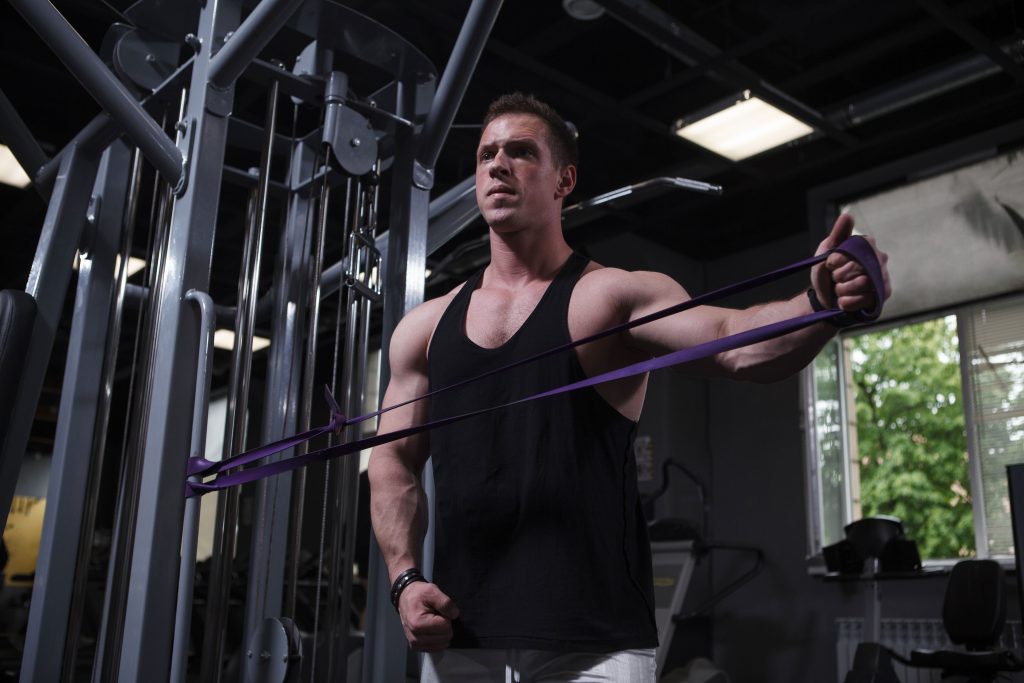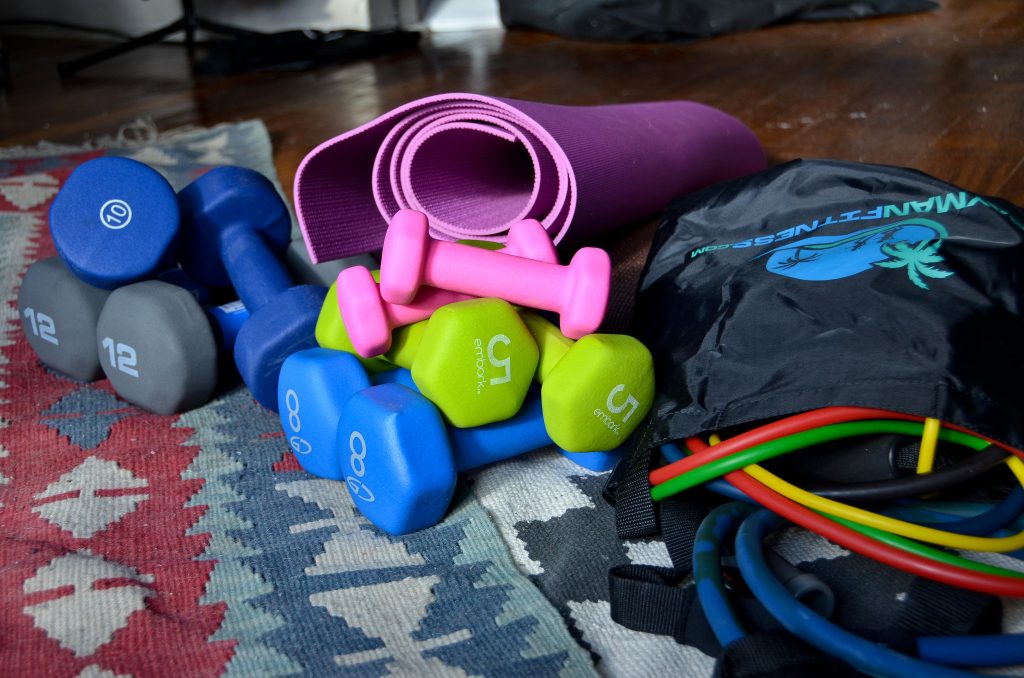
Resistance bands have an unassuming look compared to the die-cast metal of dumbbells and hefty exercise machines we’re used to seeing in gyms.
It’s common for people to wonder if a thin latex band or rubber tube can offer a serious workout. Especially when its use is synonymous with yoga, Pilates, rehabilitation, workouts for beginners, and exercise for seniors.
Are resistance bands really an effective workout tool, particularly when compared to dumbbells? The answer is: yes!
A 2019 study found that resistance bands give you similar gains in terms of strength as conventional gym equipment. In this case, appearances are indeed deceiving.
Expanding Your Workout Equipment Options
Resistance bands first started to gain in popularity in the 80s. Companies like Bodylastics were eager to give the exercise tool the respect it deserves. And as a result, today we have a huge selection of resistance bands available to people at any level of fitness.
So, it’s not a matter of if resistance bands in general can meet your fitness needs. It’s a matter of if you have the right ones in your arsenal.
The best-selling sets tend to include four or five bands varying in resistance of about 3 to 19 pounds. These will satisfy people using resistance bands in the traditional sense, namely for less strenuous exercise.
It’s become more common for resistance band manufacturers to offer sets aimed at the strong man, athlete or MMA hopeful. These sets include the same bands included with the mainstream packages along with very heavy bands that are rated at 23 lbs. and 30 lbs. Thus, if you’re main goal is to build strength, these heavy bands will be needed to make them more comparable to dumbbells.
[content-egg module=AmazonNoApi]

The Resistance Band Advantage
Resistance bands are generally thought of as a toning, or cardio related tool rather than one for bodybuilding. While this is a perception that’s hard to break, heavy bands are actually just as good for building muscle. Additionally, this tool gives you access to another world of exercises not available to the dumbbell user.
Forget about generic exercises that feel robotic and unnatural. Resistance bands are very effective at allowing you to strengthen the muscles associated with motions related to your specific interests. For example, baseball pitchers can add resistance to their pitching motion, and tennis players can beef up their backhand or forehand foreword swing. Thus, resistance bands are a useful niche tool for training. It just takes a bit more imagination to utilize this potential.
Generally, resistance bands users are less prone to injury. However, the benefit of freedom of movement can pose threats to the careless or uninformed. If you exercise with improper form consistently issues may arise such as muscle damage, plus stretched ligaments and tendons. To avoid this, follow recommended resistance band exercises. If you feel the need to experiment, pay careful attention to any pain or discomfort that develops and stop immediately if it does.
Resistance bands are ideal for whole-body exercises. Training this way will help encourage and give you the means to achieve a more holistic workout. You’ve seen bodybuilders with huge biceps but underdeveloped forearms, a barrel chest and chicken legs. This is the outcome of going for the most obvious results and missing the details. Don’t be “that guy” (or girl). Use resistance bands to strategically build strength where it is most needed.
Complementary, Not a Replacement
Exercising with resistance bands can keep you limber, toned, and build your strength. Also, they are great for getting underutilized muscles and joints active again. That being said, it plays an important role but isn’t a panacea either.
Free weights excel at certain exercises that resistance bands can’t match. If you also have access to a home gym, barbells and dumbbells, you’ll be able to get the best workout possible. Those taking their body building to the next level may tire of feeling a band pressing against their body and pick up some dumbbells for a different feel.
—





